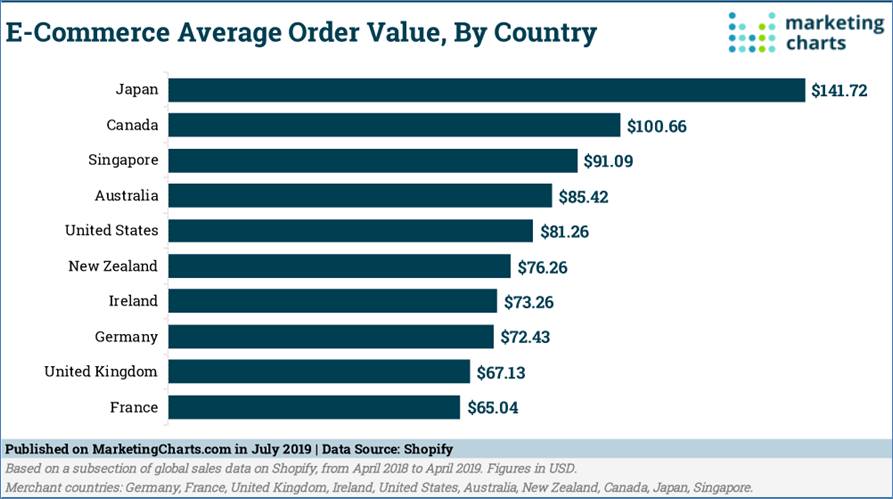![]() Not quite once upon a time, but some moons past, in a faraway land of opportunity, lived a crafty lady called
Not quite once upon a time, but some moons past, in a faraway land of opportunity, lived a crafty lady called  Annie. She cleverly crafted fairy and feathery, wondrous earrings which nobody else made. Then one fine day she thought she should venture on the internet and thus duly signed up with Etsy. Folks from near and yonder places found her online and happily purchased her hand-crafted wares. She enjoyed what she was doing, and after some time, even started to earn a modest living. Alas, one dark day, Etsy abruptly began promoting and prioritizing only the sellers who gave free shipping. Annie wasn’t one of them, because she just couldn’t afford it, and didn’t want to raise her prices. Her sales soon fell, by nearly half, and she began complaining often and bitterly to Etsy. But we have to do this, they replied, buyers now expect and want free shipping, just look at Amazon. The Company told her to do look at what everyone else was doing, raising their prices to absorb and disguise their shipping fees. But when she cast her eyes around, she saw that others were too scared to raise their prices, and so just ate up the extra cost.
Annie. She cleverly crafted fairy and feathery, wondrous earrings which nobody else made. Then one fine day she thought she should venture on the internet and thus duly signed up with Etsy. Folks from near and yonder places found her online and happily purchased her hand-crafted wares. She enjoyed what she was doing, and after some time, even started to earn a modest living. Alas, one dark day, Etsy abruptly began promoting and prioritizing only the sellers who gave free shipping. Annie wasn’t one of them, because she just couldn’t afford it, and didn’t want to raise her prices. Her sales soon fell, by nearly half, and she began complaining often and bitterly to Etsy. But we have to do this, they replied, buyers now expect and want free shipping, just look at Amazon. The Company told her to do look at what everyone else was doing, raising their prices to absorb and disguise their shipping fees. But when she cast her eyes around, she saw that others were too scared to raise their prices, and so just ate up the extra cost.
And so, sadly, she did the same, but earned less and less and no longer made a living. She felt hurt and betrayed, and after a while, closed her online store. End of true story. There are thousands of stories like this one and retailers, especially e-Commerce ones, are licking their financial wounds. A particular deep and grievous wound is that more and more Customer are not only demanding and expecting free shipping, but increasingly, free returns as well.
Alas, free shipping for Customers isn’t free shipping for Merchants, they have to pay for their Courier deliveries, which is often expensive and can cut deeply into their profits. The internet spawned many idea and innovations , but also just as many half-truths and myths. One of these was that online shopping would be the better, faster and cheaper than physical store visits. The idea was swallowed whole.
With a few mouse click, voila’, the Customer would click and buy what her she wanted and the parcel would effortlessly arrive at one’s door for little or no cost, bother or inconvenience. And the Customers did just that, they dumped bricks-and-mortar shops and moved to online stores.But what about the parcel shipping costs in delivering the parcel to Customers, who pays for these? Why, the Customers will reply, not us of course, the Merchants ! Now, how did this come about?
About 20 years ago, the US-based footwear retailer Zappos decided to introduce free shipping, and not just one-way, but both ways. If the shoes you ordered online were too big or too small, you just returned them and you ordered another pair, until you got a perfectly fitting pair, and all this shipping was free or at no cost to you. The idea caught on and unfortunately for other merchants, it also introduced up the costly expectation that all other online sellers would do the same.
The problem is that, unlike Zappos, not everyone sells John Lobb Becketts Oxford men’s shoes at $1,965.00 x pair where, we suspect, the profit might be in the hundreds of dollars and the same-city shipping could be around cost $15. In fact the Average Order Value (AOV) is a hell of lot smaller that than, according to Shopify’s 2019 e-Commerce’s statistics shown below:

Taking this point further, we too are an online seller but simply cannot offer free shipping because our profit is so small and doing so would mean selling at a loss, as detailed in an average Invoice below:
| Retail Price of Goods |
20.00 |
||||
| Add Melbourne Metro Shipping |
10.99 |
||||
| Invoice Total |
30.99 |
||||
| Less Cost of goods |
8.00 |
||||
| Less Administration |
1.00 |
||||
| Less Cardboard, Wood & Plastic Packing Materials |
1.15 |
||||
| Less Picking & Packing Labour |
4.20 |
||||
| Less Couriers' Charge |
7.99 |
||||
| Total Cost of Sale |
22.34 |
||||
| Profit |
8.65 |
And, we suspect, that there are many other small to medium size online sellers who, like us, simply cannot afford to offer free shipping. There are also other commercial risks and costs eating into the profit margin associate with free-shipping. An obvious one is that it has a tendency to encourage low A.O.V. ( Average Order Value ) purchases which often make transactions barely profitable, if at all, for Merchants.
For instance, which would Customers want to order a carton of 24 picture frames if they can just buy a couple at a time with free shipping? Another risk is that if a retailer starts offering free-shipping, its Customers will then start expecting free returns, potentially doubling shipping costs, not to mention parcel losses and breakages. Yet another danger, is that free shipping and free returns, potentially imply that a Merchant’s service products may be over-valued and of mediocre quality, hence the ease by which Customers can receive and return unwanted goods.
Lastly, free shipping is a point of no return, once granted to Customers it can never be taken back. Should a retailer try this, Customers will buy elsewhere since the way they now spend money is ruthless, brutal and unforgiving. So what might be a solution? A brilliant solution at least for one online retailer, is Amazon’s “free shipping” service, touted as free but which their Customers pay for. At the time of writing, to get free shipping from them, Australian Customers need to subscribe for Amazon Prime Membership.
The first payment plan show to visitors on visiting Amazon Prime is the $6.99 x month or $83.88 x year subscription. While Amazon Prime may have benefits for it subscribers, we fail to see how paying $83.88 x year can be considered by any stretch o f the imagination as “free shipping” . For some bizarre reason, Customers themselves refer to their membership as entitling them to free shipping and compartmentalize their paid membership as extraneous to the cost of their purchase transactions.
We have give it to Amazon’s marketers, they charge their Customers for free deliveries, and Customers love it ! Alas, for smaller Merchants who charge shipping, like ourselves, it is disheartening to see many online sales being abandoned when freight or shipping costs are added.
The updated, worldwide feedback, studies and Customer surveys all point to one factor, Customers want their goods as cheap as possible, delivered the same or next day, and for free. Frighteningly, the percentage of Customer who stated that they would not place an order unless they got free shipping rose from 38% in 2017 to 75% in 2019. So more and more Customers want free shipping, that’s quite clear, but who pays for the Couriers?
We are not the only one who think that free shipping is simply unaffordable for the majority of online retailers. A while back, Jerry Storch, Chief Executive of Hudson’s Bay Company, the Canadian brick-and-mortar retailing giant, stated that it can be up to 3 times more expensive for retailers deliver products to their Customers than to have them come and buy in a store.
More to the point, he said for many retailers that are offering this service, free shipping is making them lose money. Even Amazon, it is rumored, only recoups about 55% of the money it spends on its free shipping. Granted, the massive amount of parcels it generates entitles it to far better shipping rates than anyone else. Whereas the average e-Commerce site would pay around $8 to $9 for a courier road delivery, Amazon might pay about half of that. Even so, a couple of years back, in its annual report, it outlaid $11.5 billion on shipping while recouping $6.5 billion and its costs are growing. The corporation, however isn’t accountable for profitability as others are, and its investors seem to be gambling on growth, rather a return on their investments.
This is why it can afford to drag everybody else to the same retailing gutter where everyone else must also offer free shipping, if they want to compete. And what about other e-Commerce players, do they have alternatives? Walmart doesn’t seem to have an answer for this conundrum either. The Washington Post reported that the store started a trial programme whereby its employees deliver online orders to Customers while going home from work. Other retailers are considering unusual option such as a cheaper prices on items when Couriers are near a Customers’ homes. But that won’t work either, we all know that Customers don’t want to wait, they want their goods, like, yesterday. For decades, if not forever, store owners, marketers and advertisers focussed on AEIOU, the holy acronym of retailing.
These five cardinal rules of retailing helped businesses understand what is, or was, important to Customers. A stood for advising and helping Customers, which the stores’ salespersons were always ready and eager to provide, E was for experiential value, such as providing snacks or samples as customers browse a pleasant, attractive store environment; I meant interaction, meaning that Customers prefer to visit certain stores because when certain other, or specific, Customers, Staff or visitors are also there, O equaled opportunities which are easier to proffer personally than by way of scripting past buying order histories which can sometimes be incorrect, wrong or inappropriate, U denoted understanding, which was what the old-fashioned retailers gathered and cultivated when old Customers kept coming back to the same store year, after year.
The problem with AEIOU, is that it never included “P” for price, a new rule which in the 21st century has now supplanted all others. And should retail prices include free shipping, and all retailers ought to free-ship or not? According to most industry and commerce leaders, no, because it’s unsustainable in the long run. In particular, in our picture frames industry, most or our Customers make small purchases of 1 or 2 photo frames, or similar, at the most.
These picture frames, photo frames and frameless clip frames can be large, up to A2 Size and all have glass, a very brittle and fragile material. Shipping one or two of these large poster frames is not the same as shipping a USB stick, mobile phone or shirt. To minimize ( it can never be completely eliminated ) transit damage, each parcel requires careful packing involving, typically, inner cardboard, outer cardboard, MDF sheeting and double-layer bubble wrap. It follows that careful packing requires careful packers.
While not skilled labour, experienced packers are paid more than casual labour. You can the begin to see how, in our industry at least, the labour and materials alone, simply will not permit free shipping. And, largely because the profit margins are too small., we simply cannot afford to change this policy which we have maintained for 12 years.








